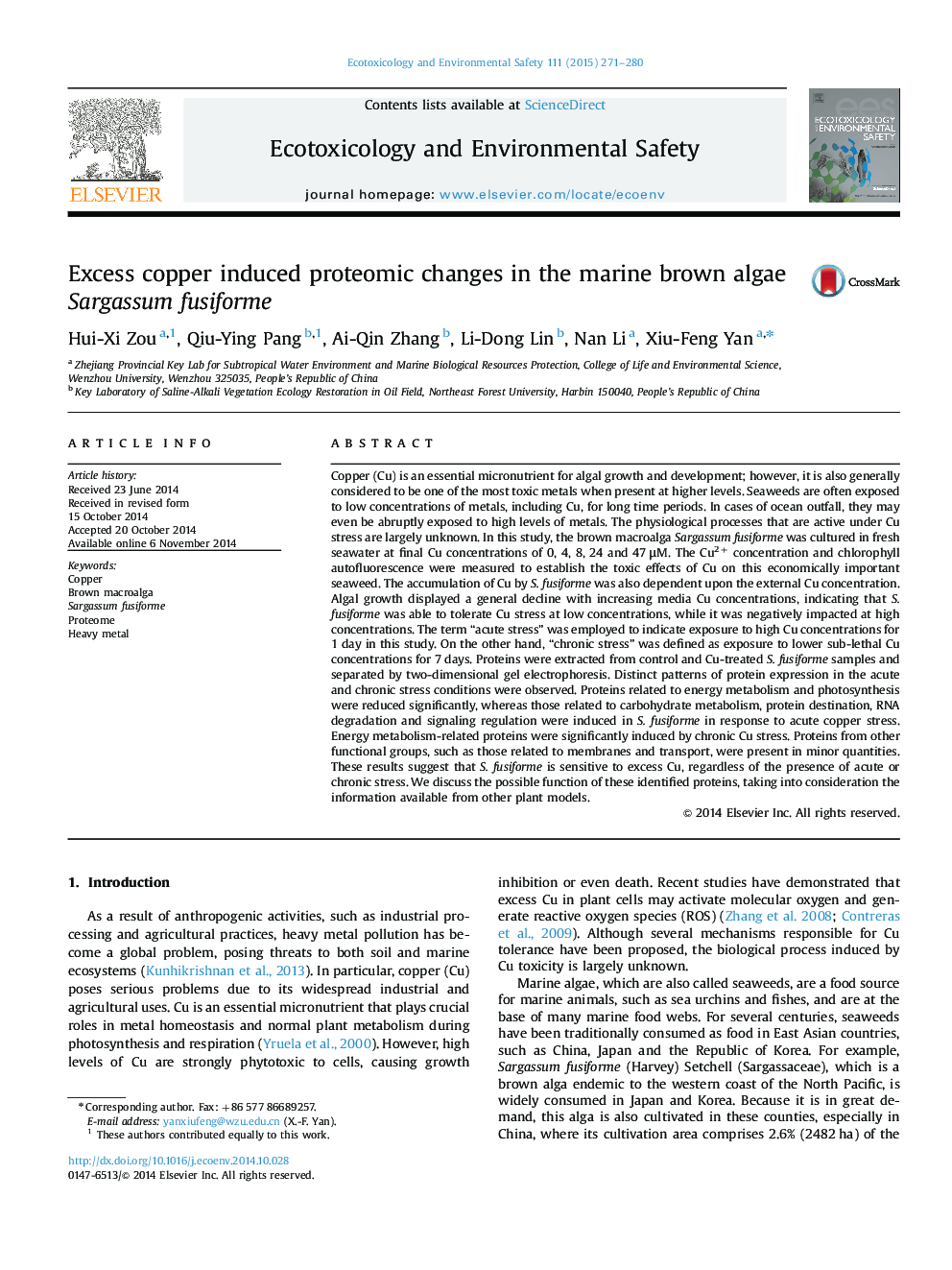| Article ID | Journal | Published Year | Pages | File Type |
|---|---|---|---|---|
| 4419870 | Ecotoxicology and Environmental Safety | 2015 | 10 Pages |
•Comparative 2-DE proteomic approach is used to investigate the impact of Cu on the marine brown algae.•Distinct patterns of protein changes in acute and chronic stress condition.•Novel target proteins are identified involved in copper tolerance in the marine alga.
Copper (Cu) is an essential micronutrient for algal growth and development; however, it is also generally considered to be one of the most toxic metals when present at higher levels. Seaweeds are often exposed to low concentrations of metals, including Cu, for long time periods. In cases of ocean outfall, they may even be abruptly exposed to high levels of metals. The physiological processes that are active under Cu stress are largely unknown. In this study, the brown macroalga Sargassum fusiforme was cultured in fresh seawater at final Cu concentrations of 0, 4, 8, 24 and 47 μM. The Cu2+ concentration and chlorophyll autofluorescence were measured to establish the toxic effects of Cu on this economically important seaweed. The accumulation of Cu by S. fusiforme was also dependent upon the external Cu concentration. Algal growth displayed a general decline with increasing media Cu concentrations, indicating that S. fusiforme was able to tolerate Cu stress at low concentrations, while it was negatively impacted at high concentrations. The term “acute stress” was employed to indicate exposure to high Cu concentrations for 1 day in this study. On the other hand, “chronic stress” was defined as exposure to lower sub-lethal Cu concentrations for 7 days. Proteins were extracted from control and Cu-treated S. fusiforme samples and separated by two-dimensional gel electrophoresis. Distinct patterns of protein expression in the acute and chronic stress conditions were observed. Proteins related to energy metabolism and photosynthesis were reduced significantly, whereas those related to carbohydrate metabolism, protein destination, RNA degradation and signaling regulation were induced in S. fusiforme in response to acute copper stress. Energy metabolism-related proteins were significantly induced by chronic Cu stress. Proteins from other functional groups, such as those related to membranes and transport, were present in minor quantities. These results suggest that S. fusiforme is sensitive to excess Cu, regardless of the presence of acute or chronic stress. We discuss the possible function of these identified proteins, taking into consideration the information available from other plant models.
